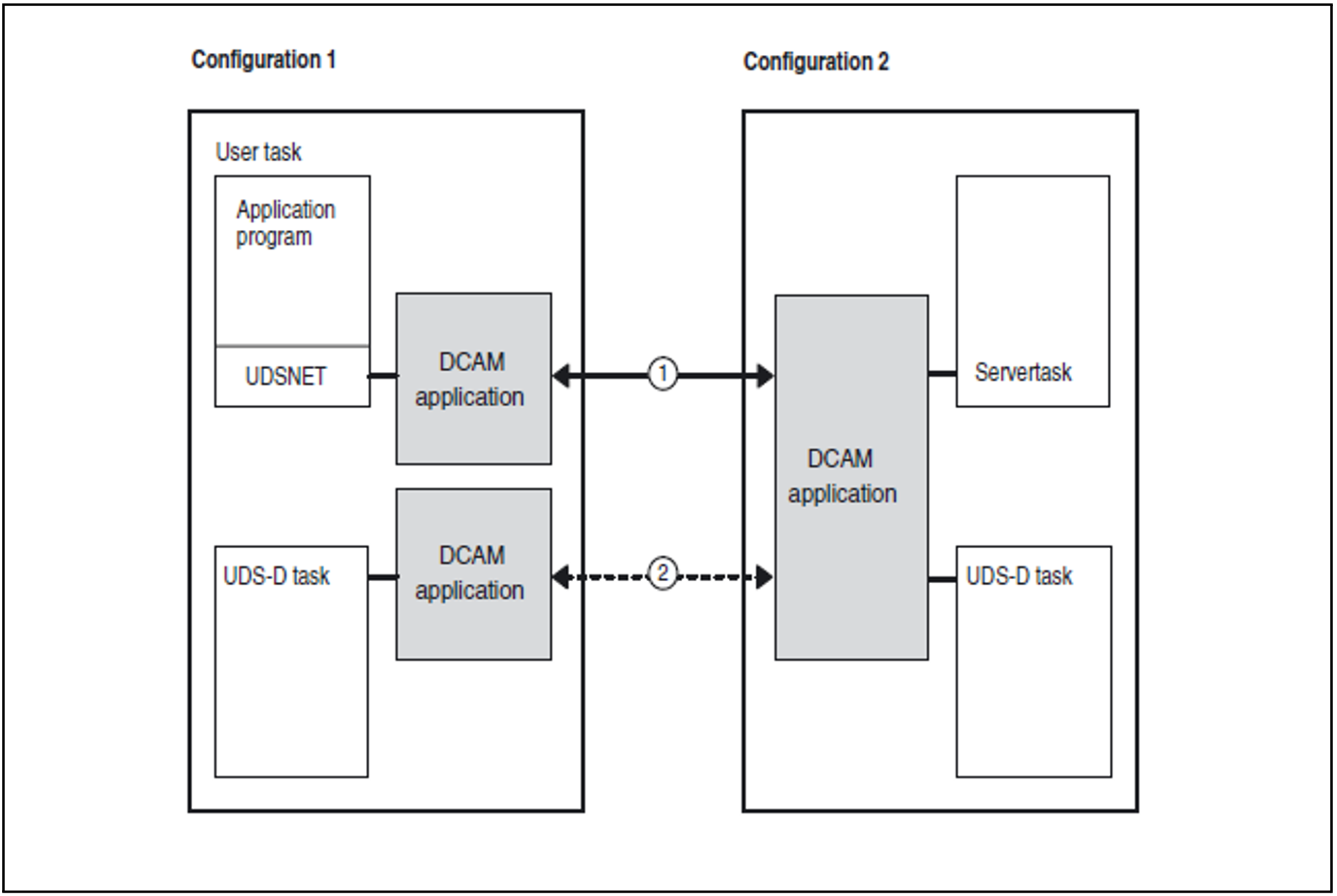UDS-D is essentially implemented in a configuration by
the UDS-D task (UDSCT)
a distribution component in the application task (module name UDSNET).
Every configuration that is to communicate with remote configurations must be running UDS-D, i.e. must have the UDS-D task started in it.
The UDS-D task handles all the communication required to process DML statements received from remote application programs.
When UDS-D is used, the distribution component in the user task is loaded dynamically by UDS/SQL. The distribution component forwards the DML statements that come from a local application program and are to processed in a remote configuration. This occurs as follows:
When the DBH is started, the UDS-D task sets up a distribution table as specified (see section “The distribution table”). This table contains the following assignments:
Subschema: Database
Database: Configuration and
Configuration: Host processor and password
When UDS-D mode is started, the distribution component in the user task uses this distribution table for each READY statement to determine where the DML statements for the processing chain involved are to be sent.
Communication between two configurations occurs by means of DCAM applications, which interact via logical connections. This applies even if the configurations are located in the same host.
Figure 17 shows the communication between two configurations, with one application program in one configuration using distributed processing.
Figure 17: DCAM applications and logical connections for distributed databases with UDS-D
This logical connection is used to process DML statements. It is set up once per user task as soon as the user task accesses a remote configuration for the first time.
This logical connection is used for monitoring and for a warm start. It is set up once per configuration if required and is subsequently cleared when no longer needed.

